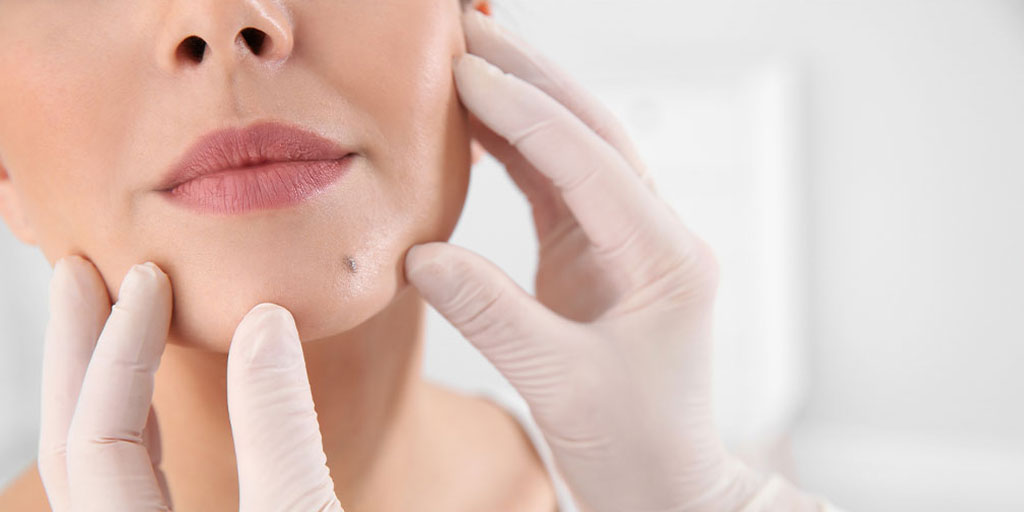Moles are small growths on the skin of a human body. Commonly they are brown and common in many people. They may develop alone or in groups on the skin. It is very normal to have moles and they stay on your skin for years together unless they turn their shape or color which is when it is either cancerous or infectious.
Moles may not cause much harm unless they turn their color or shape into something that may be infectious or cancerous. There are many ways of mole removal and present-day laser mole removal is known widely. Now let us know more about moles and laser mole removal procedures.

Everybody today in this world is concerned about looks and their beauty, and also according to this need, there are plenty of methods and options to make yourself look better. Who would not want to look better today than they looked yesterday? Today we will be talking about moles that are formed not only on one’s face but anywhere in the body. These are tiny marks of growth on one’s body.
Contents
Causes of Moles
Moles are developed when skin cells grow in a group instead of spreading out in the skin. These cells make the pigment that gives the natural color of skin, these cells are called melanocytes. These moles may change their color when exposed to the sun or during your teenage years or also while you’re pregnant.
Cause of Facial Mole
Moles can be caused on the face by exposure to the sun which emits ultraviolet rays and also facial moles can be a sign of aging. Moles can be genetic and indicate skin cancer as well. Seeing a dermatologist before it causes any harm to you is a better option.
Types of Moles
There are two types of moles:
Congenital nevi:
These are the moles that are with you from your birth. Congenital nevi are caused by a genetic mutation that develops in the baby in the mother’s womb itself. The probability of these moles appearing in a person is 1 out of 100. They may lead to cancer or any infection if not checked properly over the years.
Dysplastic nevi:
Dysplastic nevi are very uneven in shape and known to become larger than an eraser. These moles may grow larger and in irregular shape and change their color to form melanoma.
Melanoma is another type of skin cancer that is caused by a pigment in the body when it turns cancerous. This pigment produces cells that give color to your skin. As of now, it is not yet clear of the exact causes of melanoma but one main cause of melanoma is exposure to ultraviolet radiation.
The facial moles are of four types namely:
- Acquired moles
- Atypical moles
- Congenital moles
- Common moles
How Can a Mole Get Infected?
Commonly a mole can be infected by the bacteria which lives on your skin. These bacteria may multiply when the area is not cleaned properly. A mole can be infected by the presence of a fungus or virus. A mole can also be infected by scratching or irritation. Like any other part of a human body, a mole can be infected too and one can identify it when the mole turns red or swelling or pus or bleeding or pain. It is important to consult a dermatologist when it is itching as it may lead to serious skin cancer.
Mole Removal Procedure
A mole should be inspected by a professional dermatologist. Mole removal can be done in just one visit to the doctor or it might take a surgical procedure depending on the mole size, color, and shape. Not every mole on a human body needs to be removed or treated but a professional doctor will recommend and remove moles that bother you while clothing when the patient feels it’s not attractive, and moles that may lead to skin cancer.
There are many mole removal procedures and the laser mole removal procedure is one among them. Now let us know more about the common ways of the mole removal procedure.
Surgical excision:
As you can imagine when you read the name surgical excision it means a professionally trained doctor will cut the entire mole out of the skin and stitch the skin back if necessary. Once this is done a doctor will look into your mole using a microscope in search of cancerous cells in case there is any present in your body.
Surgical shave:
As you understand by the name shave, your dermatologist will shave the mole off from the skin using a surgical blade, and a Microscope is used to look into your mole to check for cancerous cells.
Laser Mole Removal Procedure
Can a laser remove moles? This is a quite common question. Yes, lasers can do it.
Laser mole removal is a process where moles that are difficult to reach are removed using a laser process in more than one or two sessions by a professional dermatologist. The sessions depend on the shape, size, and color of the mole. Laser treatment to remove a mole is a cost-effective method and is one of the best and easiest ways to remove a mole and that is why it is quite popular. Laser treatment for moles is suggested by dermatologists as it consumes less time and is more effective.
After a mole is removed either through any of the methods used by a dermatologist, your skin will heal with time but in case the mole grows back you need to immediately update it to your dermatologist as it may be melanoma, a type of skin cancer which is dangerous.
Laser mole removal on face:
Facial moles can make a person look unattractive and that is why a person wishes to remove them. There are many ways of treating a facial mole through safe and painless procedures cosmetically. Now let us know about laser facial mole removal.
Facial laser mole removal:
As the skin is sensitive and a person’s face is delicate and very important for his attractiveness a dermatologist must be careful. That is why laser facial mole removal treatment is a better and more efficient and as assured most convenient way of mole removal on the face. A dermatologist applies anesthesia on your face and uses the laser light beam which breaks down the cells in the mole. The mole dissipates and dissolves when the process is done and also there is no scarring.
Treatment & Removal of Infected Mole
There are two ways of treating infected moles and it is very recommended by a dermatologist to have regular checks on moles that are bleeding or discharging pus as they may be cancerous.
Antibiotics:
Infection may happen to any part of the body but a mole infection is serious. One must clean the mole with water or any antiseptic and pat it dry at least twice a day when he notices a difference in the mole or swelling or pain. Applying antibiotic gel will help this process. You must not squeeze it or rub it as it may lead to irritation which will increase the infection in the mole. You might want to consult a dermatologist if the mole does stop bleeding or paining even after one or two days of cleaning it. This way it can be treated early in case of any cancer.
Laser removal:
A professional doctor must be consulted when the mole is in an area where it is frequently disturbed by touching or catching on clothing or rubbing to remove it. A dermatologist uses a laser method of removing the mole which passes beams of light to the mole to kill the infected mole cells and prevent it from being a serious issue for humans. Also, in this removal method smaller and shallower do not require special attention. Early treatment of infected moles can prevent the human from skin cancer.
Do Not Try Removing Mole at Home
Never underestimate a mole and try to do something about it at home as it may make it uncomfortable for you, let us know three reasons why you should let a professional dermatologist look into it.
Skin cancer:
When you try to cut it off from your skin or peel it off it may still leave a few cancerous cells in your skin which may lead to skin cancer. I hope you do not need that.
Scarring:
You can make a difference in your appearance at that particular spot which can make you less attractive. Many people today think about their looks and attractiveness, I hope you do not want to spoil that.
Infection:
When you do something about the mole without the consultation of a dermatologist it may lead to various infections. Dermatologists use specific aseptic equipment to treat you.
Risks of Mole Removal
There are many ways of mole removal and also there are many risks with the removal of moles. One must be ready to face these risks if the moles are not treated well. Commonly it may be an allergy or infection or rare nerve damage. If one chooses a good dermatologist, it will decrease the risks associated with mole removal procedures. The risk also may depend on the area and the method of treatment.
Home Care After Mole Removal
- Apply a petroleum-based jelly-like Vaseline onto the wound and add a bandage.
- One must clean the wound at least twice a day with clean water.
- People assume, and it has been said in previous times, that leaving a wound open to the air helps in faster healing, but several studies have disapproved this and have proven that bandages and antibiotic salve help in healing faster.
- Vitamin E must be avoided as studies have proven that vitamin E slows down the healing process and then accelerates it.
- Applying a scar healing gel on the wound would not leave a scar on the skin. There is a gel that covers the scar and provides healing power that is available on the market. Initially, petroleum jelly is appreciated.
Conclusion
Laser mole removal is the most effective way to remove moles and skin tags. With a laser mole treatment, a dermatologist or plastic surgeon will polish the mole to break up the pigment cells and then treat the area with the laser, which targets pigment cells and not healthy skin. This process is much more effective than excision, with the advantage of not leaving a large, visible scar. Laser mole removal can be performed on large or complex moles and is an ideal alternative for those with sensitive skin or those who are looking for a scar-free aesthetic result.
These birthmarks are harmless growths that appear on the skin as flat, disc-like, or raised brown spots. While some are small and harmless, others may be painful and unsightly. If you are unfortunate enough to have a mole that is cancerous, then it is important to have it removed as soon as possible. Doctors usually recommend having moles removed by surgery, which is the best method if you want a quick and permanent solution.
We hope this article helps you to learn all the information you need to know about laser mole removal.
Posts You May Like:
- Benefits of the Argan Oil for the Skin
- Treatment of Acne on the chin and jawline
- Why your face is oily when waking up in the morning
- Permanent Treatment of Blackheads Holes


